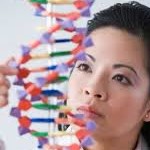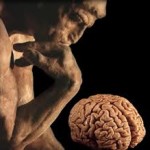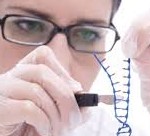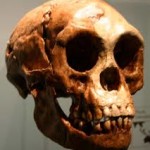ATCG not enough for good DNA?
In “Structural Basis for a Six Nucleotide Genetic Alphabet” published at the Journal of the American Chemical Society researches propose adding a couple of letters.
“Z” and “P” would contribute to the classic double helix structure with similar flexibility and rigitdy. Paper states that this would integrate well with current ‘conventional’ pairs. An ATCGZP DNA could evolve and take a life of its own. Literally. Including evolution and all its unforeseen consequences.
In theory, having an enriched set of building blocks would increase the possibility of creating new proteins and thus potentially useful for medial and scientific purposes. Perhaps one advantage is that such proteins (and other biochemical structures) is the fact that they would be easily marked and spotted as distinguished elements.
“The First Energy Revolution — Tesla Energy Changes Everything” by Ken Trough
From Cleantechnica:
“(…) We all know the world runs on energy, but we’ve been conditioned over the last couple of generations to see energy as something that requires careful conservation and conscious usage.
(…) Power conservation has only been necessary because the vast majority of our energy needs have been, up until now, either provided by non-renewable resources (like coal or other fossil fuels), or by resources with considerable negative environmental risks (like nuclear power). Remove the downside of energy production, build out a decentralized green power generation network with more capacity than is required, and you remove the necessity to conserve power at all. (Of course, until it is really built out, conservation is very important to keeping our emissions down and stopping global warming.)
(…) Of course, harnessing all that free solar power for our use is easier said than done. (…)
Aren’t Battery Systems Old News?(…)
Our past energy paradigm was largely based on central power generation (…) Tesla Energy’s stationary battery systems support a decentralized power generation architecture.(…)
This is the key fundamental enabling technology that solar power has been waiting for. (…) No longer will the “energy conservation” paradigm rule our thinking and limit our growth. Once the artificial scarcity of power production based on fossil fuels is removed, we will see a revolutionary transformation of our society and the world at large.(…) ” read full article
reading list: Woody Allen
“The World of S.J.Perelman” by S.J. Perelman
 – Woody Allen’s interview
|
|
“Elia Kazan: A Biography” by Richard Schickel
 – Woody Allen’s interview
|
|
“Epitaph of a Small Winner” by Machado de Assis
 – Woody Allen’s interview
|
|
“Catcher in the Rye” by J. D. Salinger
 – Woody Allen’s interview
|
|
“Really The Blues” by Mezz Mezzrow
 – Woody Allen’s interview
|
Mapping Approaches to AI Safety
Alexey Turchin proposal to elaborate methods to ensure safe AI involves a series of checks and constraints to AI capabilities.
Supporting his proposal he offers a couple of graphic framework of his safety policies.
you may be giving away your attention for free
Sometimes we take services (apps, web, search, lots) in exchange of our permission to our behavioral and pesonal data. And very often we refer to this exchange as using services ‘for free’. Even a not-naive position still may tend to undervalue our attention.
In “Is Advertising Morally Justifiable? The Importance of Protecting Our Attention“, Thomas Wells proposes an interest argument that may highlight some issues on the topic.
Consciousness, mind and brain – introducing Passive Frame Theory
Taking in consideration the carefulness required in any claim of a novel theory on consciousness and the necessary time to read and digest such a paper: “Homing in on Consciousness in the Nervous System: An Action-Based Synthesis” published at Behavioral and Brain Sciences by Associate Professor of Psychology Ezequiel Morsella from San Francisco state University.
A traditional disputed field among philosopher’s, psychologists, and many other research areas, theories of mind struggle to stand in solid ground. In this aspect, this paper could be situated as a more naturalistic approach to the matter.
Focusing in overt action and reversing the attempt to understand mind-brain relationships from action to causes (instead of a stimulus-response study) is indeed not usual in recent or mainstream debate. On this, it may bear some interesting dialogue with Piaget’s theory on intelligence, impulse and logic.
Such approach and the naturalistic arguments walk its way in what could be a descriptive, not normative, theory of mind-brain relationship.
A short introduction may be found by means of the press release issued along the article.
mens sans in corpore sano
A stroll in the field is good for our minds? Sure. Update your repertoire on why it is so with this “Nature experience reduces rumination and subgenual prefrontal cortex activation” by Gregory N. Bratmana, Paul Hamiltonb, Kevin S. Hahnc, Gretchen C. Dailyd,e,1, and James J. Grossc.
The study approached the question “what mechanism(s) link decreased nature experience to the development of mental illness?”
Researchers suggest “One such mechanism might be the impact of nature exposure on rumination, a maladaptive pattern of self-referential thought that is associated with heightened risk for depression and other mental illnesses. We show in healthy participants that a brief nature experience, a 90-min walk in a natural setting, decreases both self-reported rumination and neural activity in the subgenual prefrontal cortex (sgPFC), whereas a 90-min walk in an urban setting has no such effects on self-reported rumination or neural activity.”
The Genesis Engine – will we change DNA faster than we can deal with it?
In another good piece on CRISPR DNA editing revolution, “Easy DNA Editing Will Remake the World. Buckle Up.” by Amy Maxmen.
“The technique is revolutionary, and like all revolutions, it’s perilous. (…) It could at last allow genetics researchers to conjure everything anyone has ever worried they would—designer babies, invasive mutants, species-specific bioweapons, and a dozen other apocalyptic sci-fi tropes. It brings with it all-new rules for the practice of research in the life sciences. But no one knows what the rules are—or who will be the first to break them.
IN A WAY, humans were genetic engineers long before (…) through selective breeding. But it took time, and it didn’t always pan out.
(…)
Working together, microbiologist Emmanuelle Charpentier and biochemist named Jennifer Doudna’s teams found that Crispr made two short strands of RNA and that Cas9 latched onto them. (…) Cas9 does something almost magical: It changes shape, grasping the DNA and slicing it with a precise molecular scalpel.
(…) Once they’d taken that mechanism apart, Doudna’s postdoc, Martin Jinek, combined the two strands of RNA into one fragment—“guide RNA”—that Jinek could program. He could make guide RNA with whatever genetic letters he wanted(…) Cas9 protein proved to be a programmable machine for DNA cutting. (…) Doudna’s team published its results in Science.(…)” read full article
Populating paleoamerica – who’s to blame
Two recent studies – with non-convergent conclusions – about early human settlement in the americas.
nature’s “Genetic evidence for two founding populations of the Americas” analyses genomic data pointing to genetic familiarity among some amazonian populations and Australasians. This is a more diverse genetic ogirin than presented in the other study,
Science’s “Genomic evidence for the Pleistocene and recent population history of Native Americans” claiming evidence for a single migration wave from Siberia populated Americas.
reading list: Bill Gates
Below some of top recommendations. for a more complete view of the books, including reviews and comments, see his bookshelf by Bill Gates himself
“Tap Dancing to Work” by Carol Loomis
“Making the Modern World” by Vaclav Smil
“The Sixth Extinction” by Elizabeth Kolbert
“Stress Test” by Timothy Geithner
“The Better Angels of Our Nature” by Steven Pinker
“The Man Who Fed the World” by Leon Hesser
“Business Adventures” by John Brooks
“The Bully Pulpit” by Doris Kearns Goodwin
“The Rosie Project” by Graeme Simsion








